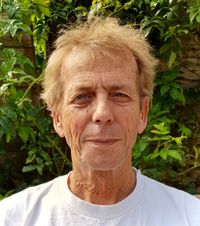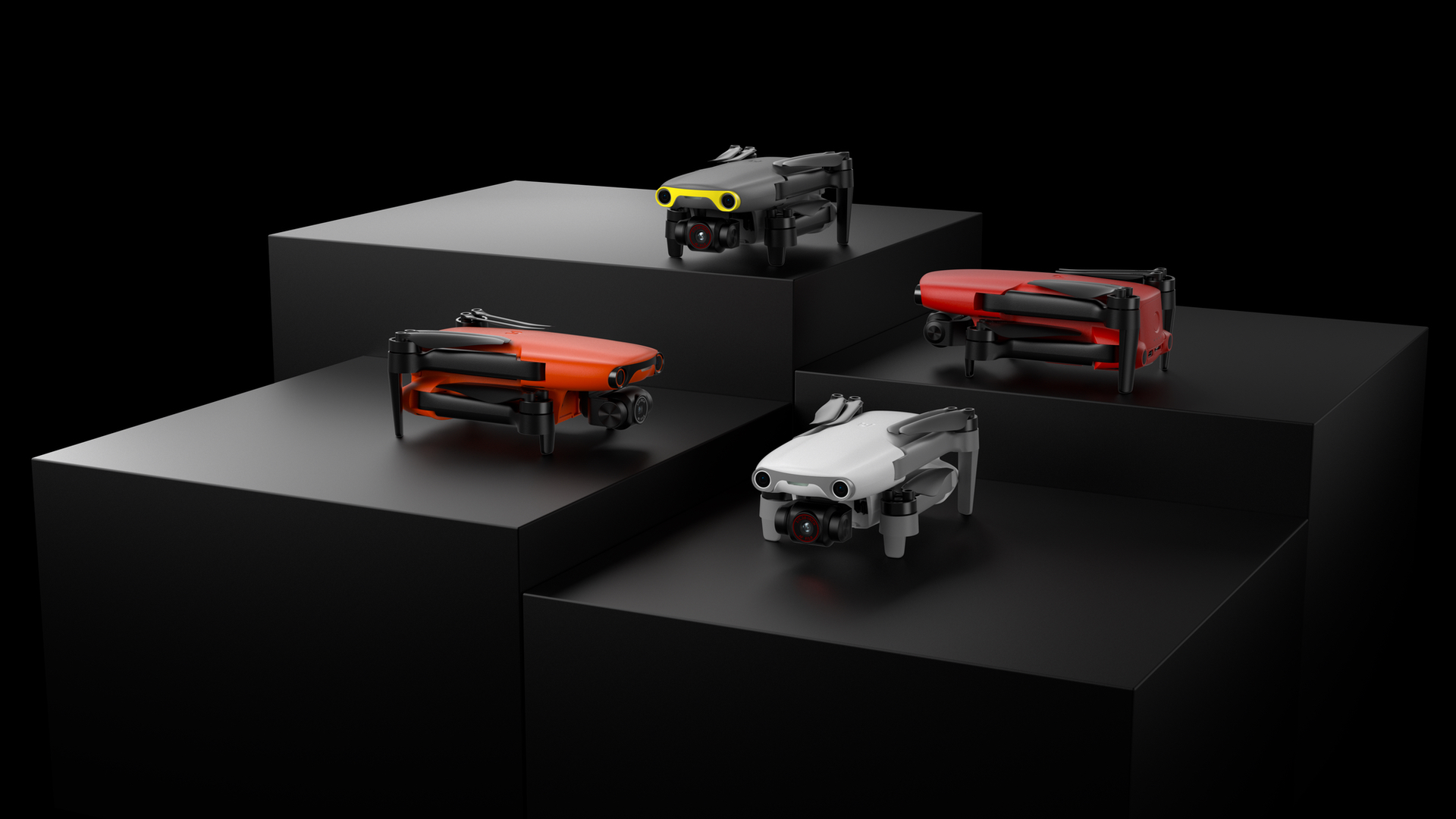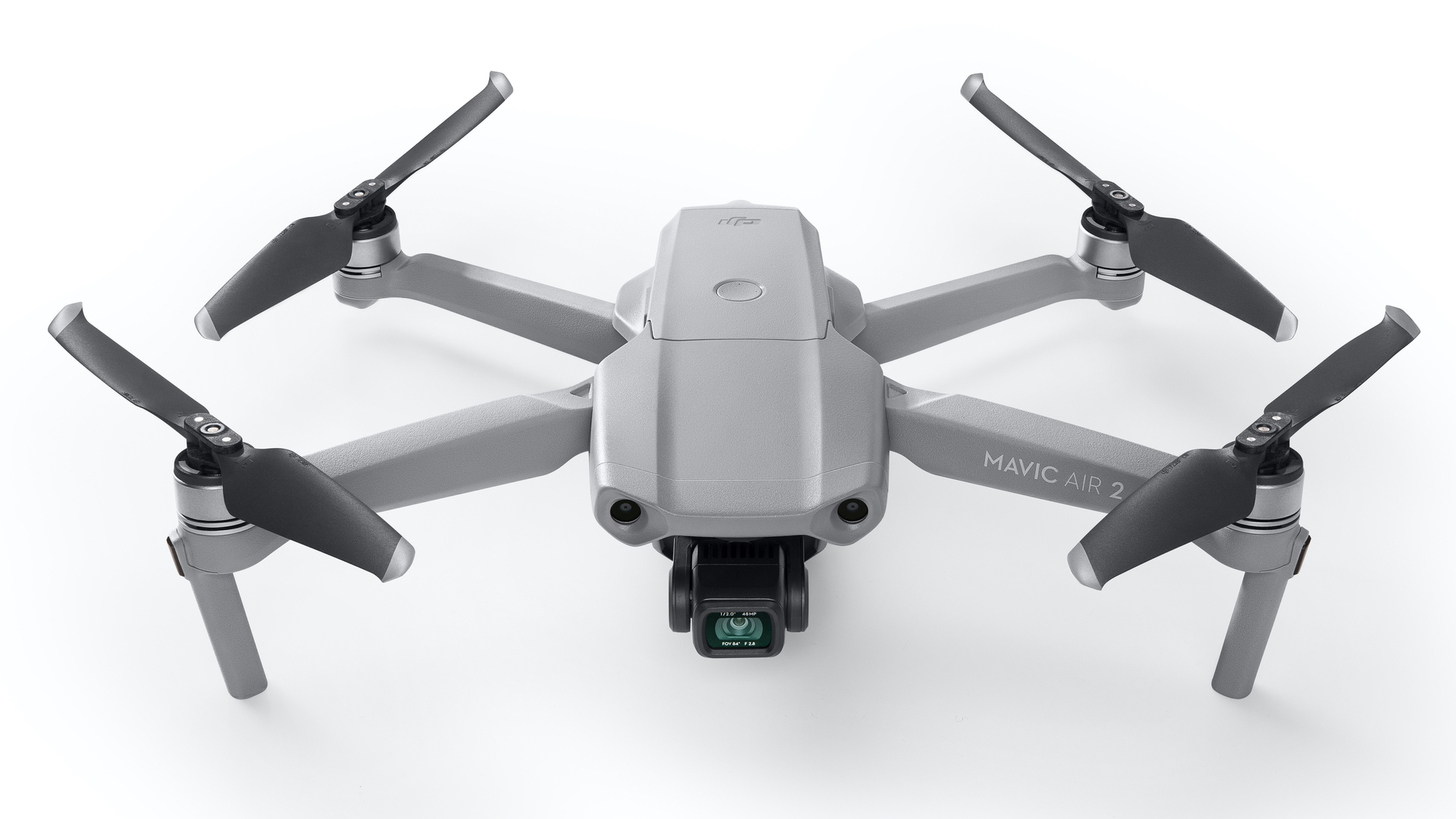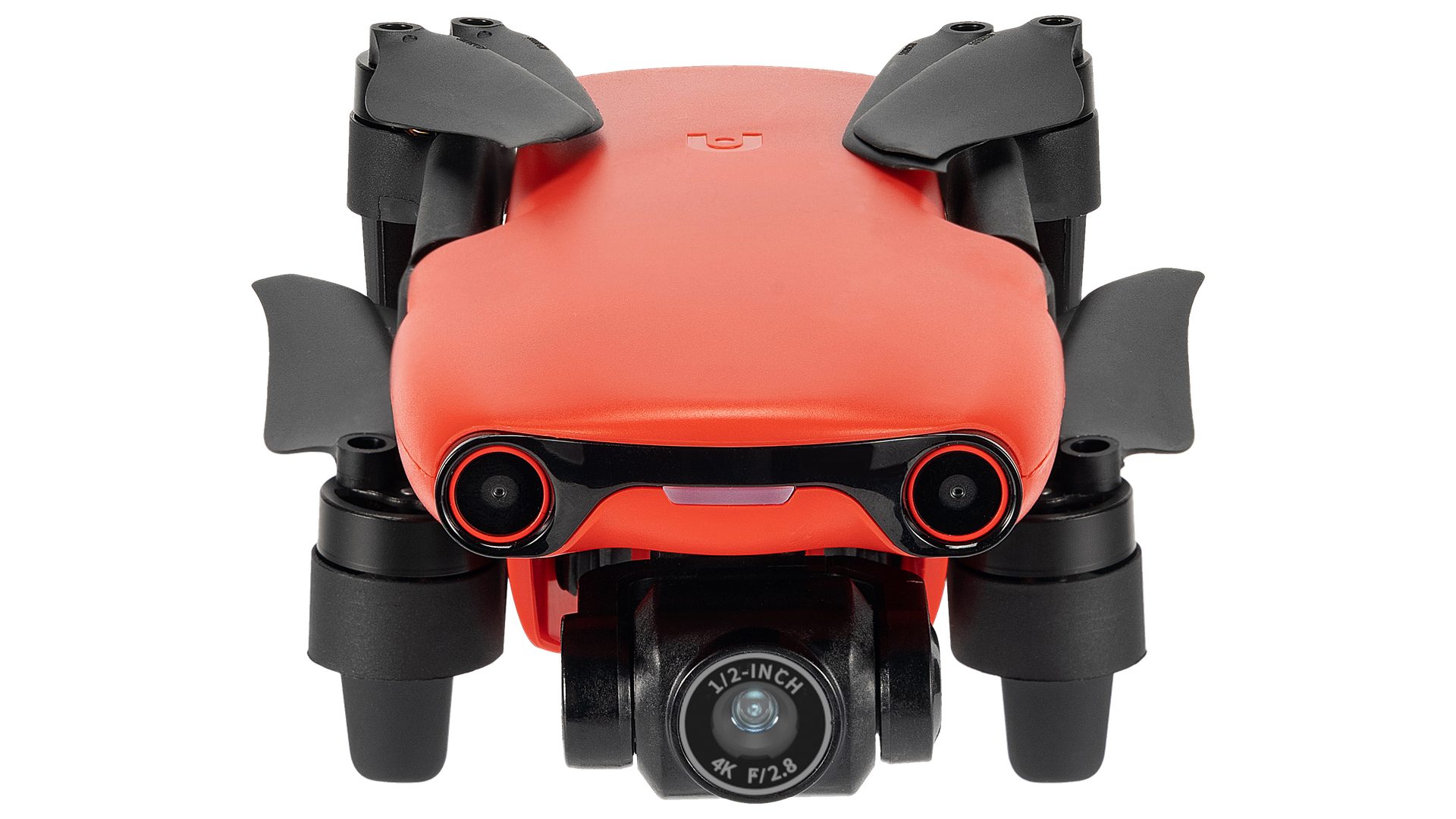

Welcome to our comparison between three sterling camera drones – the new Autel Evo Nano, DJI Mini 2 and DJI Mavic Air 2. For a closer look at each model individually, you should check out our Autel Evo Nano review, DJI Mini 2 review or DJI Mavic Air 2 review. But here is where I'll be comparing all three, in terms of design, features, price and camera quality, to help you decide which is the right option for you. All three appear in T3's official best drone ranking, but different models will suit different use cases (and budgets).
Before we start I should add that I’m a huge fan of DJI products, especially its large roster of consumer drones. DJI drones are exceedingly well built and superbly designed. But more importantly, the company has pushed the boundaries regarding the cameras its drones are equipped with. DJI drones are also renowned for their rocksteady reliability which is vital when it applies to an aircraft that, physically speaking, shouldn’t be able to fly at all.
I’ve reviewed every drone in the DJI roster going all the way back to its first Phantom Vision 2. I’ve also reviewed many of its immediate competitors – Parrot, 3DR, PowerEgg, GoPro etc – and they’ve all fallen to the wayside because they just couldn’t compete with DJI’s expertise in the field of drone design, manufacture and marketing. Sure they all flew pretty well but, to me, they were ultimately let down by the generally poor quality of their respective cameras. And let’s face it, the camera and its stabilising gimbal are far and away the two most important items on any drone designed for shooting video and stills.
If anyone was going to successfully compete against DJI, they would have to produce a drone and camera that were as good if not better. Well I’m thrilled to say that, in Autel, DJI at last has a very decent adversary to contend with – and that can only be a good thing for consumers. Here's a closer look at how the Autel Evo Nano, DJI Mini 2 and DJI Mavic Air 2 drones compare.
Why are we comparing three different drones?
Why exactly am I looking at these three particular drones – the Autel Evo Nano, DJI Mini 2 and DJI Mavic Air 2? Most drone fans have been comparing the new Autel Evo Nano with the DJI Mini 2 because, at 249g apiece, they are both in the CAA’s sub-250g A1 and A3 categories. This means the Evo Nano and Mini 2 can be flown in some areas that are restricted to drones over 250g in weight. (Update: as of May 2022, another DJI entered this same compact drone arena – for more on that, head to our DJI Mini 3 Pro review.)
Along with camera quality, the A1/A3 category is arguably the most important consideration when choosing a drone because, let’s face it, the more complicated 'A2 Certificate of Competency’ which allows pilots to fly in areas not covered by the A1 and A3 categories is a very expensive hassle to acquire, even though it allows you to fly in more areas and even commercially (check out my UK drone rules guide for more on this – or if you're Stateside, the US drone rules and regulations).
The reason we’re also including the DJI Mavic Air 2 in this comparison feature is because the Autel Evo Nano’s camera and in-flight specs are closer to the DJI Mavic Air 2 than they are to the DJI Mini 2. So, without wasting any more time, let’s see if we can drill down into all three models and come up with an overall winner.
Get all the latest news, reviews, deals and buying guides on gorgeous tech, home and active products from the T3 experts
- Too pricey? Here are the best cheap drones to buy
- ... and the best drones for beginners
- For toy options, head to our best kids' drones guide
Autel Evo Nano vs DJI Mini 2 and DJI Mavic Air 2: design

The Autel Evo Nano os available in red, orange, grey and white
Both the Autel Evo Nano and DJI Mini 2 weigh in at 249 grams. Size wise, the Evo Nano – at 142×94×55mm when folded – is a mere 4mm longer than the Mini 2. But at 260×325×55mm when unfolded, the Evo Nano has a considerably larger wingspan which you could argue gives better stability in wind. Both drones are rated at Level 5 for wind resistance. By comparison, the DJI Mavic Air 2 weighs 570g and, when folded, measures 180×97×84mm. It too sports Level 5 for wind resistance.

The DJI Mini 2 and Mavic Air 2 are available in any colour, as long as it's grey
All three drones look very similar in design, especially when viewed a few metres up in the air. However, DJI drones – the Mini 2 and Mavic Air 2 included – are only available in battleship grey which is a) boring and b) difficult to see against clouds. By contrast, the Evo Nano is available in four colours – a similar dull grey, plain white and, rather brilliantly, bright red and delicious orange. Orange appears to be the colour of choice for most buyers because it’s easily spottable from even a couple of hundred metres away. And, besides, it's a gorgeous looking orange to boot.
Autel Evo Nano vs DJI Mini 2 and DJI Mavic Air 2: features

The DJI Mavic Air 2 (pictured) and Autel Evo Nano both sport obstacle avoidance
Taking camera equipment out of the equation, the main inflight feature of both the Autel Evo Nano and the DJI Mavic Air 2 is the inclusion of three-way obstacle avoidance – downward, forward and rearward. Obstacle avoidance isn’t the most vital feature to have on a drone but, nevertheless, it will at some point inevitably save the drone from crashing into an obstacle, whether it’s a tree in foliage, a wall or even a person. The fact the little Evo Nano has obstacle avoidance is cause for celebration because the similarly-sized DJI Mini 2 has no obstacle avoidance at all. Having the extra weight of obstacle avoidance somehow crammed into a sub-250g drone is the stuff of science fiction and one of the Evo Nano’s main USPs.
Autel Evo Nano vs DJI Mini 2 and DJI Mavic Air 2: camera performance

Both the Evo Nano and Mavic Air 2's cameras have 1/2 sensors while the Mini 2's is smaller at 1/2.3
This is where it gets very interesting. When it comes to choosing cameras – both land-based and air-based – most of us these days are looking at sensor size. This is the little light-sensitive solid-state device that sits behind the camera lens. Aside from the glass quality of the lens, it’s the sensor that dictates ultimate image quality. Generally speaking, the bigger the sensor, the better the image resolution. However, bigger sensors are usually also better for low-light shooting and increased depth of field.
The Autel Evo Nano ships with a 1/2-inch sensor which is class leading in a drone of this size, especially when you consider that the much larger and heavier DJI Mavic Air 2 has the same size sensor (both drones produce 48 megapixel images).
By stark contrast, the DJI Mini 2 is equipped with a much smaller 1/2.3” sensor which simply can’t compete when it comes to sharpness and low-light videography and photography. All three drones share the same maximum aperture of f/2.8.
Although not part of this comparison, the Evo Nano’s stablemate, the Autel Evo Nano+ has an even larger 1/1.28 inch sensor with a groundbreaking aperture of just f/1.9. In my Autel Evo Nano Plus drone review, I was blown away by this drone's shooting capabilities, which are in another class compared to the Nano.
But I digress. Most casual fliers would be more than happy enough with the Mini 2’s footage quality but the Evo Nano blows it out of the water for sharpness and overall resolution. The Evo Nano’s image quality is also easily on par with the DJI Mavic Air 2 but it’s not quite up there with the newer DJI Air 2S, which is still our current favourite for wannabe cinematographers.
From a specs point of view, the Autel Evo Nano shoots video in a number high resolutions – 4K at 30 frames per second, 2.7K at up to 30fps and 1080p at up to 60fps. The Mini 2, on the other hand, also shoots 4K at up to 30fps but its 2.7K setting is capable of shooting at up to 60fps. Mind, this is only useful if you want to slow the footage down in post production. The DJI Mavic Air 2, by comparison, beats them all frame speed wise with 4K at up to 60fps and 1080p at up to 240fps. All three models are equipped with 3-axis gimbals for rock-steady image stabilisation.
However, when you figure in size, weight, licensing considerations and price, the Autel Evo Nano is still a clear winner when it comes to shooting video and taking still images.
Autel Evo Nano vs DJI Mini 2 and DJI Mavic Air 2: flight performance

For their size, the DJI Mini 2 (pictured) and Autel Evo Nano are both sterling flyers
Being the largest and heaviest of the three, the DJI Mavic Air 2 should, theoretically, be a better flyer in a stiff breeze. That said, all three drones are designed for Level 5 wind resistance (up to 23.5mph).
When it comes to inflight response to the hand controller, all three are in the same boat – ie, they respond brilliantly well to even the smallest of joystick movements. Like a sophisticated car accelerator, the first two centimetres of stick movement move the drones gently in the direction of your steering. But whack them to full speed and they will scamper off at breakneck pace.
The law states we should always fly ‘line of sight’ but if you had the permission or lived in an area where drone laws are very lenient, all three models will happily fly off towards the horizon for many miles, all the while streaming what their front cameras see back to the phone’s monitor. In the case of all three drones in this comparison, you get up to six miles apiece, as long as the flight is unobstructed. That’s a long, long way.
In terms of the quality of the live view images feeding back to the phone, the DJI Mini 2 and Mavic Air 2 both achieve a 720p resolution. Astonishingly, the little Evo Nano trounces both of them with a gobsmacking 2.7K resolution for up to 1km and 1080p beyond. This equates to a noticeably sharper image on the phone which in turn makes it easier to see finer details on the ground and up ahead.
There’s not a massive difference between these drones when it comes to standard-mode speed measured in no wind and at sea level. In standard mode, the Autel Evo Nano and DJI Mini 2 clock in at 22mph and the DJI Mavic Air 2 at 27mph. However, in sport mode, the Evo Nano only achieves about 29mph (after its stat was recently downgraded from 33.5mph) while the DJI Mini 2 is capable of 35.7mph and the Mavic Air 2 a substantially faster 45.5mph. Speed isn’t everything with camera drones though you would need to be more cautious when flying the Evo Nano or it may not make it back to you in a strong headwind.
More important is battery life, but again all three models here sport similar specs that are just a few minutes either way. The Autel Evo Nano flies for up to 28 minutes, the DJI Mini 2 up to 31 minutes and the DJI Mavic Air 2 a commendable 34 minutes. To be honest, 28 minutes is more than enough time to grab a great shot when flying line of sight. But you may beg to differ.
The upshot is that all three of these drones perform on a pretty equal level but, again, the Autel Evo Nano just pips the two DJIs by dint of its superior live feed.
Autel Evo Nano vs DJI Mini 2 and DJI Mavic Air 2: pilot interface

The Autel Evo Nano's X-box-like controller feels great in the hand
Some pilots don’t like the brick-shaped hand controllers that ship with the DJI Mini 2 and Mavic Air 2 but I’m fine with them. However, I’m now leaning more towards the X-Box-style controller that comes with the Autel Evo Nano. I also think the Autel gimbal control wheel feels a bit more tactile and more gently responsive to subtle finger movements.
All three controllers will accept any modern smart phone and they all have return-to-home and video/camera buttons, plus the aforementioned gimbal control wheel. They also pair to the company’s respective flight apps which are part and parcel of the flight package.
DJI’s Fly app is well established and filled with loads of tweak able parameters, but then so is the new Autel Sky app. However, the Autel Sky app does still have one or two hiccups that will doubtless be sorted in future firmware updates. Thankfully I've experience no technical issues when the bird is actually in the air.
Autel Evo Nano vs DJI Mini 2 and DJI Mavic Air 2: autonomous flight modes
All modern camera drones comes with a selection of autonomous flight features that help the user pull off cinematic shots without actually doing anything. All three of these drones ship with a range of quick-shot functions including dronie and orbit. However, both the Evo Nano and Mavic Air 2 are capable of tracking a moving subject and that’s a handy addition to have in a drone.
Autel Evo Nano vs DJI Mini 2 and DJI Mavic Air 2: price
All three of these drones are available to buy in a basic package of drone, one battery, charger, remote controller and spare props. However, we would always advise going for DJI’s Fly More combos and Autel's Premium Bundle, simply because they all ship with three batteries, a multi charger, spare props and a well-made carry case.
The Autel Evo Nano Premium Bundle costs GBP £719 / USD $799 while the DJI Mini 2 Fly More Combo sells for a considerably lower GBP £549 / USD $599. That's a not-insignificant price difference, so you really need to weigh up what you've learned and make your decision carefully. Remember, though, that the Evo Nano has a much better camera, a better live feed and obstacle avoidance.
By stark contrast, the DJI Mavic Air 2 Fly More Combo retails at GBP £949 / USD $988 (GBP £230 / USD $189 more than the Evo nano) and, although it's better in windy weather, its camera is pretty much the same as that fitted the Autel Evo Nano. Most of the other specs – obstacle avoidance, autonomous modes, maximum distance – are on a par. In fact, the only areas where the Mavic Air 2 beats the Autel Evo Nano is battery life and top speed. You might be able to snap up a DJI drone deal that'll take the price down, so you're not paying list price. Check out the widgets below for the best prices on all three models.
Autel Evo Nano vs DJI Mini 2 and DJI Mavic Air 2: verdict

The Autel Evo Nano's small form and impeccable function makes it a new top choice for casual pilots
This has been a tough one and we must bear in mind that we’re comparing a brand new drone against two much older models. What’s to say DJI’s next Mini 2 comes out the factory with even better specs than the Evo Nano?
For me the tech-laden DJI Mavic Air 2 is out of the equation simply because it’s bigger and requires extra legal hoop jumping to fly it in the same areas as the Mini 2 and Evo Nano. So that leaves it between the Autel Evo Nano and DJI Mini 2.
And the winner is… the Autel Evo Nano. It’s just such a capable little drone that takes ravishingly good video and stills, is easy to fly and a joy to use.
Now read our full reviews of the Autel Evo Nano, DJI Mini 2 and DJI Mavic Air 2
Derek (aka Delbert, Delvis, Delphinium, Delboy etc) specialises in home and outdoor wares, from coffee machines, white appliances and vacs to drones, garden gear and BBQs. He has been writing for more years than anyone can remember, starting at the legendary Time Out magazine – the original, London version – on a typewriter! He now writes for T3 between playing drums with his bandmates in Red Box (redboxmusic).
